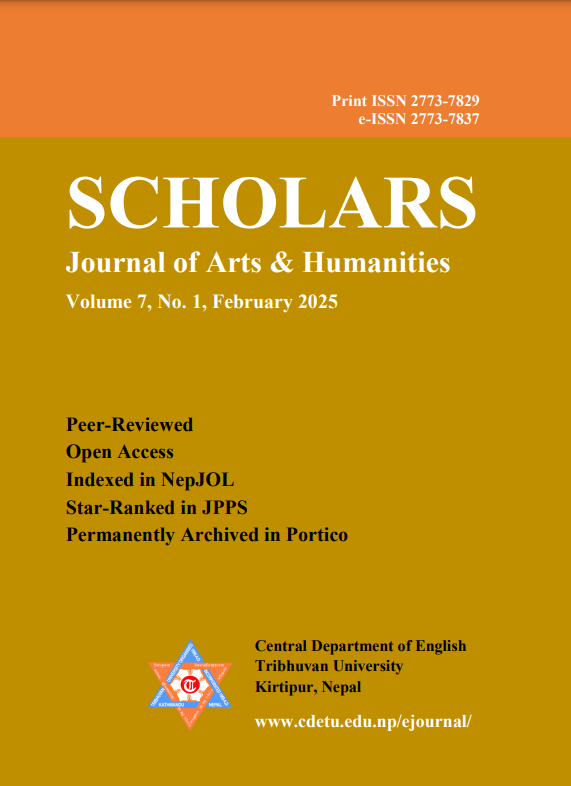The Subtlety of Hegemonic Masculinity in Nepali Films through Digital Platforms: A Critique of the Film Saino
DOI:
https://doi.org/10.3126/sjah.v7i1.75681Keywords:
Digital platform, masculinity, feminist ideology, gender stereotypesAbstract
In the paper, I argue that Nepali films are still promoting the ideology of hegemonic masculinity and patriarchy implicitly through reels in the name of upholding cultural norms. Since the internet is becoming more accessible and cheaper than before, more Nepali people of all ages tend to see Nepali films conveniently on different digital platforms. For the past decade, Nepali films have been incorporating ethnic cultural contents into their productions to both promote it and serve their audiences a new flavor. However, the effect some cultural values can have on audiences cannot be overlooked. To delve into the impact of Nepali films on audiences, I undertook a case study of the Nepali film Saino and analyzed the film’s content, and other relevant sources, applying Connell’s theory of hegemonic masculinity and other feminist ideologies. The study demonstrated that Nepali films are more concentrated on their commercial gains rather than its social and psychological impact on audiences, especially young ones. Therefore, I urge censor boards, scriptwriters, directors, producers, and audiences to critically analyze the messaging of entertainment media and engage actively in a process of deepening understanding of invisible gender dynamics so that a fairer, more inclusive and healthier society can be fostered. Overall, this paper contributes to the people’s understanding of how hegemonic masculinity and cultural values are being simultaneously perpetuated in the absence of consistent censorship.
Downloads
Downloads
Published
How to Cite
Issue
Section
License

This work is licensed under a Creative Commons Attribution 4.0 International License.
© Central Department of English, Tribhuvan University and Authors




